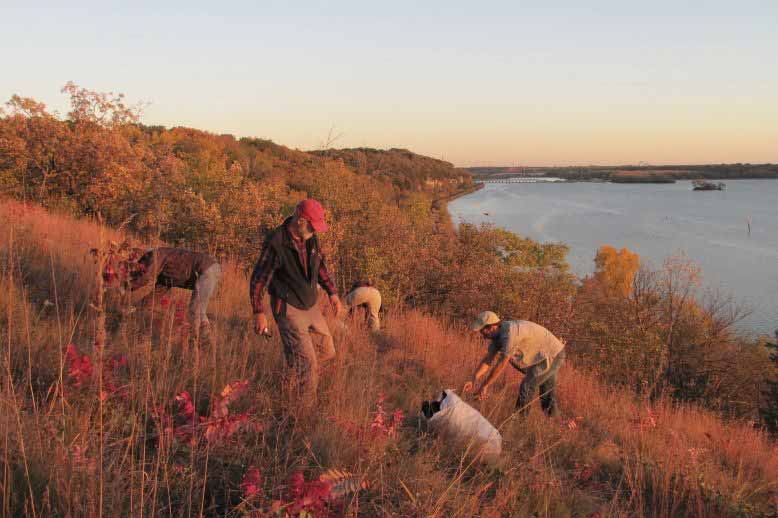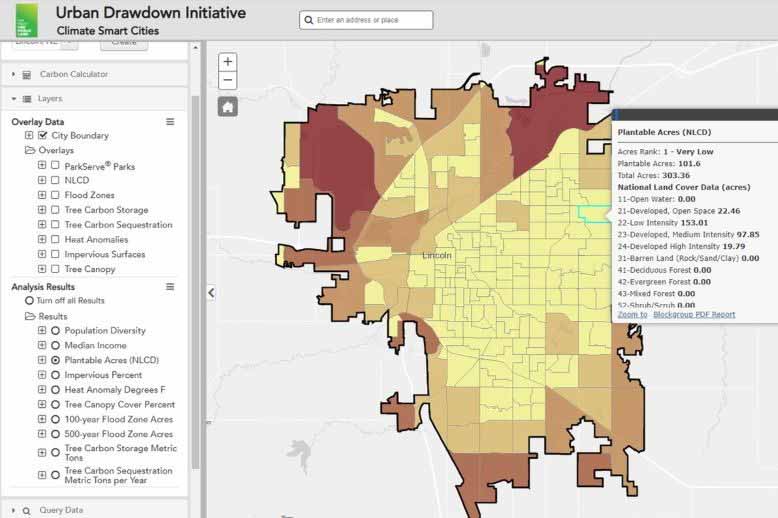In early 2021, scientists with the National Oceanic Atmospheric Administration made a sobering announcement: 2020 was one of the hottest years ever, they said, only .04 of a degree (F) cooler than 2016, which holds the record. And that wasn't all - the scientists also found that the annual Arctic sea ice coverage in 2020 was tied for the smallest on record, and the annual Northern Hemisphere snow cover measurement came in at the fourth-smallest on record. Additionally, global tropical cyclones in 2020 tied a record, and the global sea-surface temperature was the third-highest on record.
In the face of these and other signs of climate change, RBC is stepping up to help through a program called RBC Tech for Nature. Founded in 2019, RBC Tech for Nature is a multi-year commitment to bring together charitable organizations, technology experts and the public and private sectors to work toward solving pressing environmental challenges. In 2021, RBC Tech for Nature distributed more than $8 million to 100 organizations throughout the world, including $362,500 to 13 organizations in the U.S. that are using technology solutions to address some of the dire challenges posed by climate change.
“At RBC, we strive to promote sustainability in the communities we touch, and Tech for Nature has been a key initiative for us in working towards this goal,” says John Thurlow, U.S. COO for RBC Capital Markets.
“RBC Tech for Nature recipients are truly the innovators of today, working hard to create a cleaner world for tomorrow, and we're proud to support their work in this way,” adds Michael Armstrong, CEO of RBC Wealth Management - U.S.
Using Technology to Focus Preservation Efforts
Several RBC Tech for Nature grants have gone to organizations that use technology and data to protect the health of local waterways. In St. Paul, Minn., The Friends of the Mississippi River received funding to support its Watershed Protection Program, which takes a technology- and data-driven approach to protecting and improving water quality and habitat areas in the Twin Cities region. The project involves using a variety of different technologies to put together a comprehensive picture of local watersheds, looking at factors such as water quality and animal health, explains Sara DeKok, associate director-development director of The Friends of the Mississippi River.
 Friends of the Mississippi River's many different community programs work to protect local watersheds. Photo courtesy of Friends of the Mississippi River.
Friends of the Mississippi River's many different community programs work to protect local watersheds. Photo courtesy of Friends of the Mississippi River.
“We need to see how soil and geology and different ecosystem layers relate to one another,” DeKok says. “Technology helps us create a map and plans that we rely on to do restoration work.”
Through mapping software, wildlife cameras, drone technology, a volunteer app that tracks plastic pollution, and more, the organization identifies high-priority watershed areas where it can then focus its efforts on preservation and restoration. That work to preserve the health of local watersheds in the Twin Cities area is crucial, DeKok says, because “the Mississippi River touches our lives in so many ways here in the Twin Cities and throughout the watershed. It really is the building block of life.”
Connecting Communities with Data
Other RBC Tech for Nature grant recipients, meanwhile, are working to use data to help fill important conservation or environmental knowledge gaps. The Trust for Public Land, a national nonprofit, received RBC Tech for Nature funding to support the organization's Conservation Carbon Map and the Urban Drawdown Initiative. Both projects aim to deliver climate data and analysis to communities across the country using publicly available web mapping platforms, explains Brendan Shane, climate director of The Trust for Public Land. “These projects are focused on getting actionable data into the hands of land conservation professionals across the country,” Shane says. “We're working with people who are making conservation happen, to ensure we're giving them data they can use.”
 The Trust for Public Land and the Urban Drawdown Initiative are using data to demonstrate how cities and towns can remove carbon through urban agriculture or tree planting. Screenshot courtesy of the Trust for Public Land.
The Trust for Public Land and the Urban Drawdown Initiative are using data to demonstrate how cities and towns can remove carbon through urban agriculture or tree planting. Screenshot courtesy of the Trust for Public Land.
The enhanced carbon map will measure the amount of carbon stored in urban and rural areas nationwide, as well as how much carbon could be captured and stored in the future, to help land trusts, local governments and other institutions identify and conserve large carbon-rich landscapes. The urban drawdown tool, meanwhile, helps illustrate how cities and towns can capture and store carbon in natural systems including urban agriculture and tree planting.
The two projects, Shane says, will help local communities understand the potential impacts of conservation efforts. “A lot of people believe that nature is critical, and they want to support expanded conservation efforts, such as planting trees, but they might not know where they should focus first, or the quantifiable impact it will have on their community,” he adds. “These initiatives can help build greener, healthier communities.”